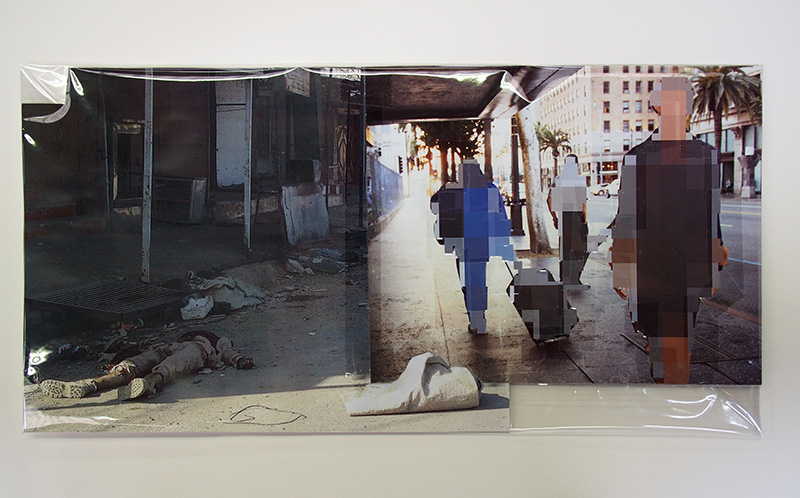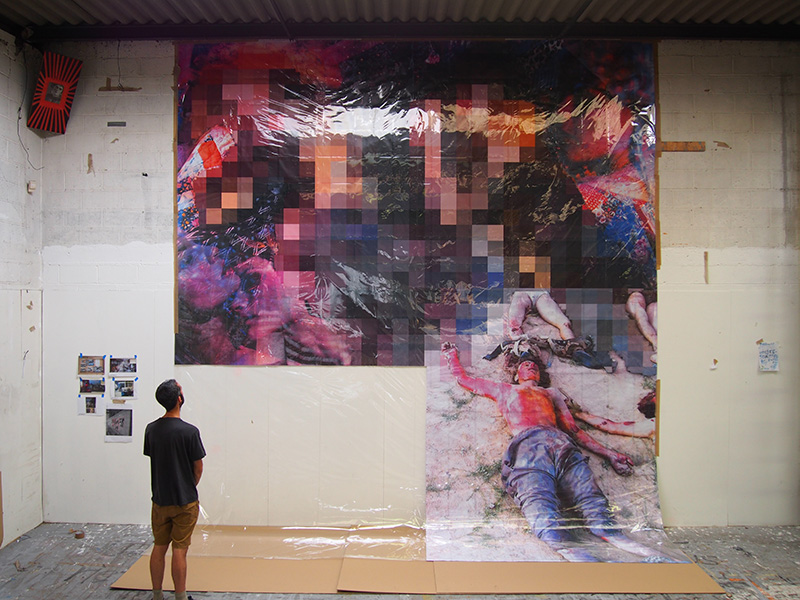ART CITIES:N.York-Thomas Hirschhorn
![]() Thomas Hirschhorn is an artist known for his sprawling works that transform traditional white cube spaces into absorbing environments tackling issues of critical theory, global politics, and consumerism. Created from the most basic everyday materials, his monumental works are concerned with issues of justice and injustice, power and powerlessness, and moral responsibility.
Thomas Hirschhorn is an artist known for his sprawling works that transform traditional white cube spaces into absorbing environments tackling issues of critical theory, global politics, and consumerism. Created from the most basic everyday materials, his monumental works are concerned with issues of justice and injustice, power and powerlessness, and moral responsibility.
By Dimitris Lempesis
Photo: Gladstone Gallery Archive
Over the last two years, Thomas Hirschhorn has embarked on this deeply personal, political and socially-engaged body of work that explores the limitations and deceitfulness of imagery found throughout popular culture and the media. The exhibition “De-Pixelation” marks Thomas Hirschhorn’s conclusion of the “Pixel-Collage” series. The artist addresses his engagement with the problem of “pixilation” and “de-pixelation” and his decision “to see and look at the world as it is, and to insist in doing so”. Photos by anonymous authors, which contain scenes of extreme violence, published on the Internet by witnesses, activists, aid workers, security agents and police officers, as well as by the fighters themselves. Thomas Hirschhorn appropriates them and enlarges them up to a scale typical of advertising billboards, proceeding afterwards with a work of collage of abstract areas, similar to the pixelating effect used over portions of the original photographic information. In many of them, the horror is left uncovered and only portions of the collage with fashion images are pixelated. The growing use of that filter interests him because pixelating and blurring are currently understood as a guarantee of authenticity – as if, in order to be authentic, certain images need to be partially pixelated. Thomas Hirschhorn questions, through a new series of collages, a particular aspect of this problematic, which he names the aesthetic of the “Faceless”, the increasingly common use by the media of pixels covering and censoring parts of images in order to hide mutilated bodies in war scenes. Thomas Hirschhorn in his text “Why is it important today to show and watch images of destroyed human bodies?” (2014) published by “Carnets du Bal” throughout eight points, he explains the reasons that led him to insert images of dilacerated bodies in some of his works.
Info: Gladstone Gallery, 530 West 21st Street, New York, Duration: 28/10-22/12/17, Days & Hours: Tue-Sat 10:00-18:00, www.gladstonegallery.com


